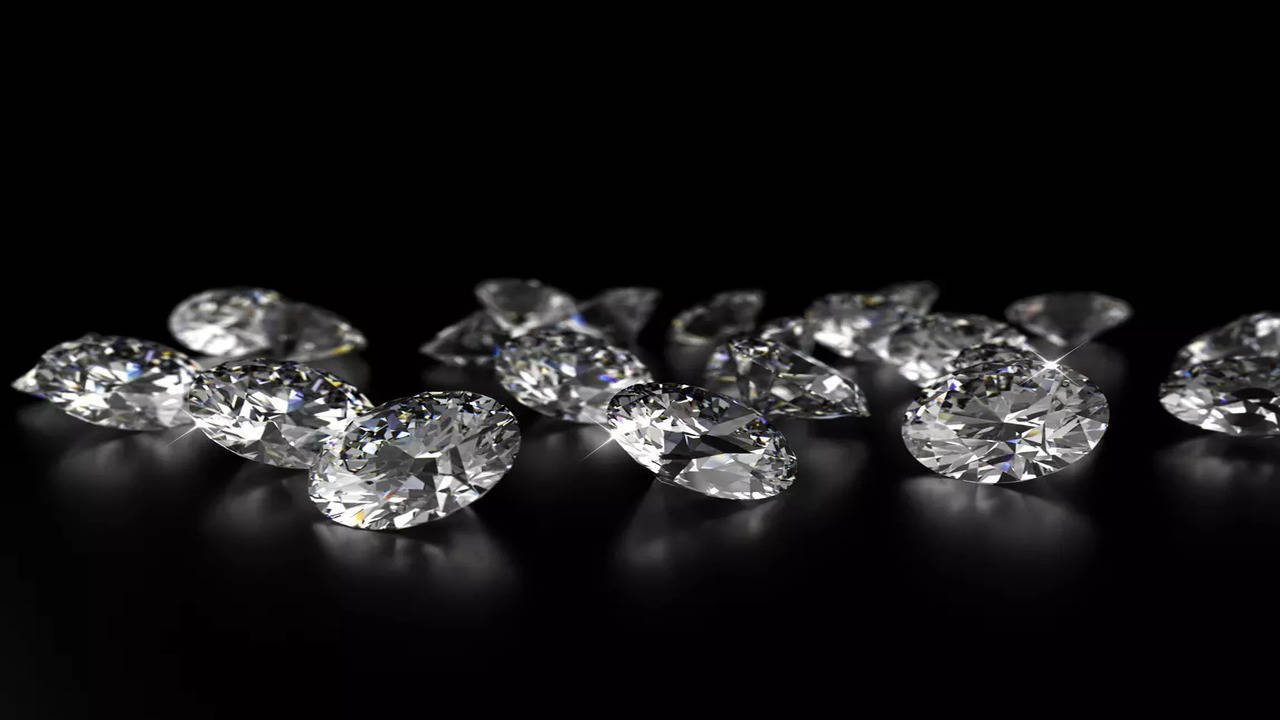[ad_1]
Only two artworks comprise Lydia Ourahmane’s Tassili at SculptureCenter in Prolonged Island Town, New York, nonetheless the exhibition is much from smaller. Tassili is each the show’s title and the identify of the Algerian-British artist’s 46-moment movie, for which she traveled to the Tassili n’Ajjer plateau, in a distant desert concerning Algeria and Libya — a bureaucratic feat in the contentious location. The movie is paired with a lustrous, black, high-aid topographical sculpture suspended from the ceiling of the spartan exhibition area. Collectively, the works pose complicated issues about the historical and political importance of the artist’s project.
Guests listen to Ourahmane’s movie right before moving into the cavernous gallery. The rating accompanying Tassili booms by the lobby, a teaser for what is to appear. Shot throughout a 14-working day journey, the awe-inspiring film displays inaccessible cliffs and crags in putting landscapes, emphasizing the stillness and absence of lifestyle in the region. Not a one particular person is revealed, and the only symptoms of vegetation are a few dried trees and grasses. Ourahmane manipulates scale, juxtaposing extended clips of the digital camera meticulously navigating the complicated terrain at a going for walks pace with static imagery of seemingly unlimited rock outcroppings and barren desert.

Inspite of its distant location, the plateau is dwelling to hundreds of prehistoric engravings and cave drawings, some courting again to 8,000-6,000 BCE. Tassili n’Ajjer translates to “bed of rivers,” as the location was at the time a fertile ecological landscape. The cave drawings acquired contemporary political significance in the 1950s when they had been identified by French archeologist Henri Lhote and subsequently employed to assist France’s campaign to carry on its colonial command throughout the Algerian War of Independence. The film shows drawings of people today, historical demons, animals, and lengthy-long gone rivers and forests. The digital camera lingers on these photographs, the only evidence of human lifetime in the space, and then cuts again to the desolate, arid scenery, a reminder of the region’s drastic ecological change.
The tunes builds and drops to accompany breathtaking views. By dramatizing the imagery, the rating queries no matter whether or not the film sensationalizes an region fraught with difficulties of colonialism and displacement. An essay written for the exhibition addresses this instantly and describes that checking out the plateau, which is not typically accepting of these types of expert filmmaking, demands neighborhood Taureg people today to provide as guides. Even with their very important role at the govt-safeguarded website, the guides had been born on the plateau and displaced by the Algerian federal government in the 1980s.
The film raises a lot of queries: How are these drawings in a place so distant? How did Ourahmane check out these a usually off-limitations area? The essay offers even further context, inviting viewers to contemplate the record of the land, including its present-working day use as a route for migrants throughout Africa, a journey that typically requires violence. The artist asks whether or not her individual journey, funded and undertaken by overseas get-togethers who would normally be forbidden from visiting, ought to be viewed as neocolonial tourism or an artistic exploration of cultural heritage. Incorporating one more layer of pressure is the simple fact that the composers designed the rating with out checking out Tassili, elevating questions (addressed in the essay) of who has the authority to explain to its background.
The sculpture suspended from the ceiling proceeds this interrogation. Manufactured of thin, black thermoplastic tiles, the 3D-printed operate shows a partially invented landscape developed from scans of sections of the desert floor that had been connected applying a general adversarial community (GAN) to fill in the blanks involving the edges. Manufactured in collaboration with artist Yuma Burgess, the sculpture acts as proof of the artist’s journey and a memento from the desert. The peaks and valleys can suggest that readers are presented an within look at this distant area, nonetheless the sculpture, like the film, was produced from meticulously preferred topographical capabilities to emphasize selected things and realize a particular over-all feeling of awe.
Ourahmane tells a layered story of the individuals and events that Tassili n’Ajjer has witnessed throughout millennia. Whilst the accompanying essay delivers critical context that enhances the film’s allusions to the ongoing outcomes of colonialism, the exhibition evokes curiosity. Visually breathtaking and sensorily participating, Tassili delivers an introduction to the elegance, sophisticated heritage, and politics of Algeria.
Tassili proceeds at SculptureCenter (44–19 Purves Street, Very long Island Town, Queens) as a result of August 1. The exhibition was curated by Kyle Dancewicz, deputy director of SculptureCenter.
[ad_2]
Source connection







